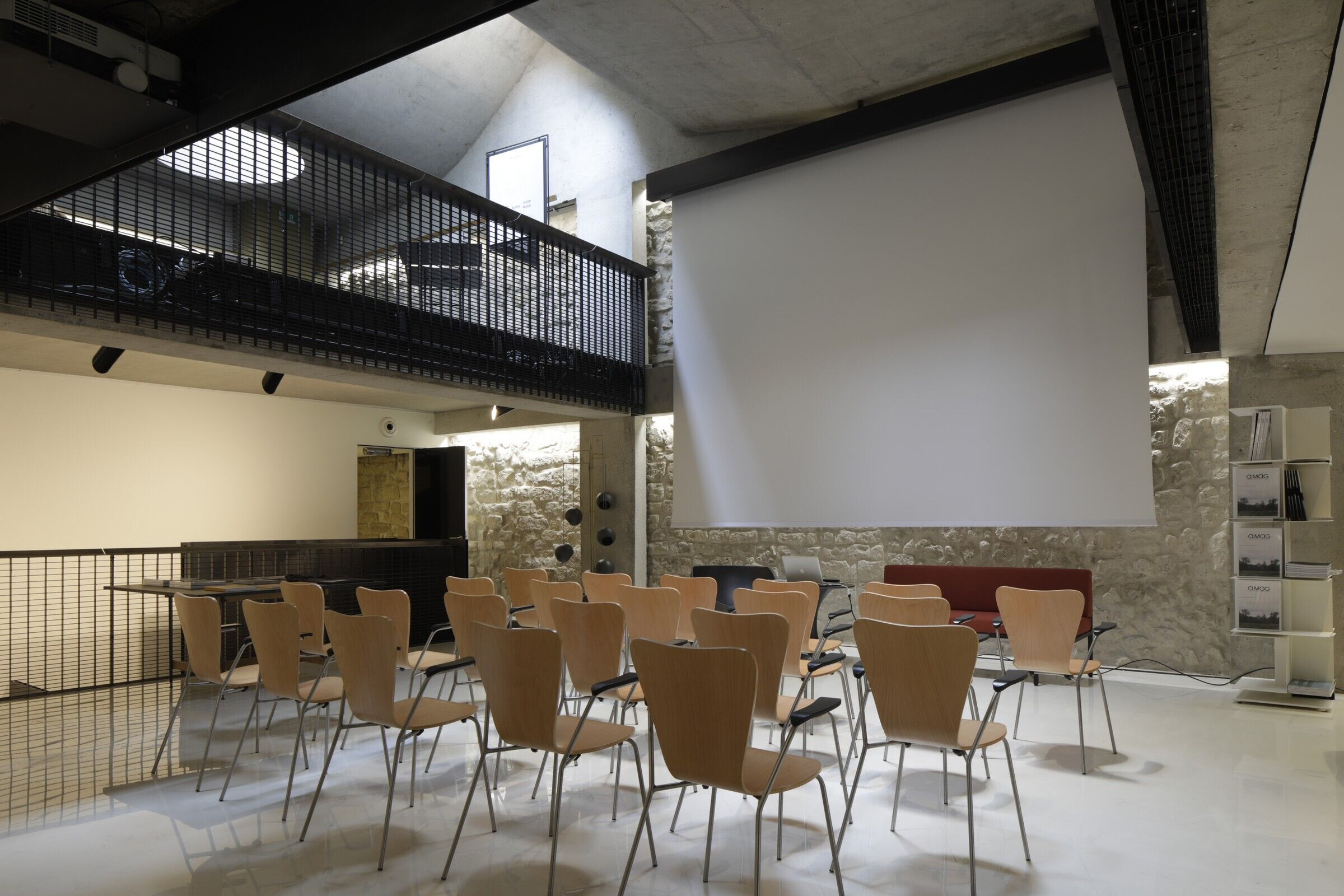In the heart of the Marais, in the 3rd arrondissement of Paris, Jacques Moussafir has completed the rehabilitation of a building dating from the 1970s, transforming it into a mixed-use commercial location with offices and flats.
Inside Outside studio (Amsterdam) intervened in this operation to create a 10m curtain façade.
Restructuring a modern building in the Haut Marais
This 10-level commercial building designed in the 1970s by the Biro Fernier firm is a rare example in this sector of France’s 30-year post-war economic boom. It is comprised of a 7-story reinforced concrete framework on top of a 3-level underground car park built with prestressed concrete technology - innovative for the period - an inverted vault supporting a suspended garden in the heart of the city block and a Mansard roof profile with 6 lucarnes crowning the building, the entire structure being made of shuttered concrete. Although standing amidst a landmarked district composed entirely of protected historic buildings, local authorities (the ABF) determined that it had no heritage interest, thereby facilitating the transformation of both the interior distribution and its envelope.


A neutral and generic structure
Like open-plan floors without intermediate columns, the principal quality of the original construction resided in its neutral and generic character. It is this overall grasp of the building’s structure that guided our architectural choice, from the insertion of interior elements (staircases, guardrails, floor, and ceiling coverings) to the design of the envelope by way of the choice of materials and the details regarding their implementation. Thus, the staircases and guardrails, as well as the façades, were designed as features borrowed from locksmithing, most often suspended and dissociated from the concrete structure in order to highlight the loadbearing role of the original shell in relation to these “borrowed” features.
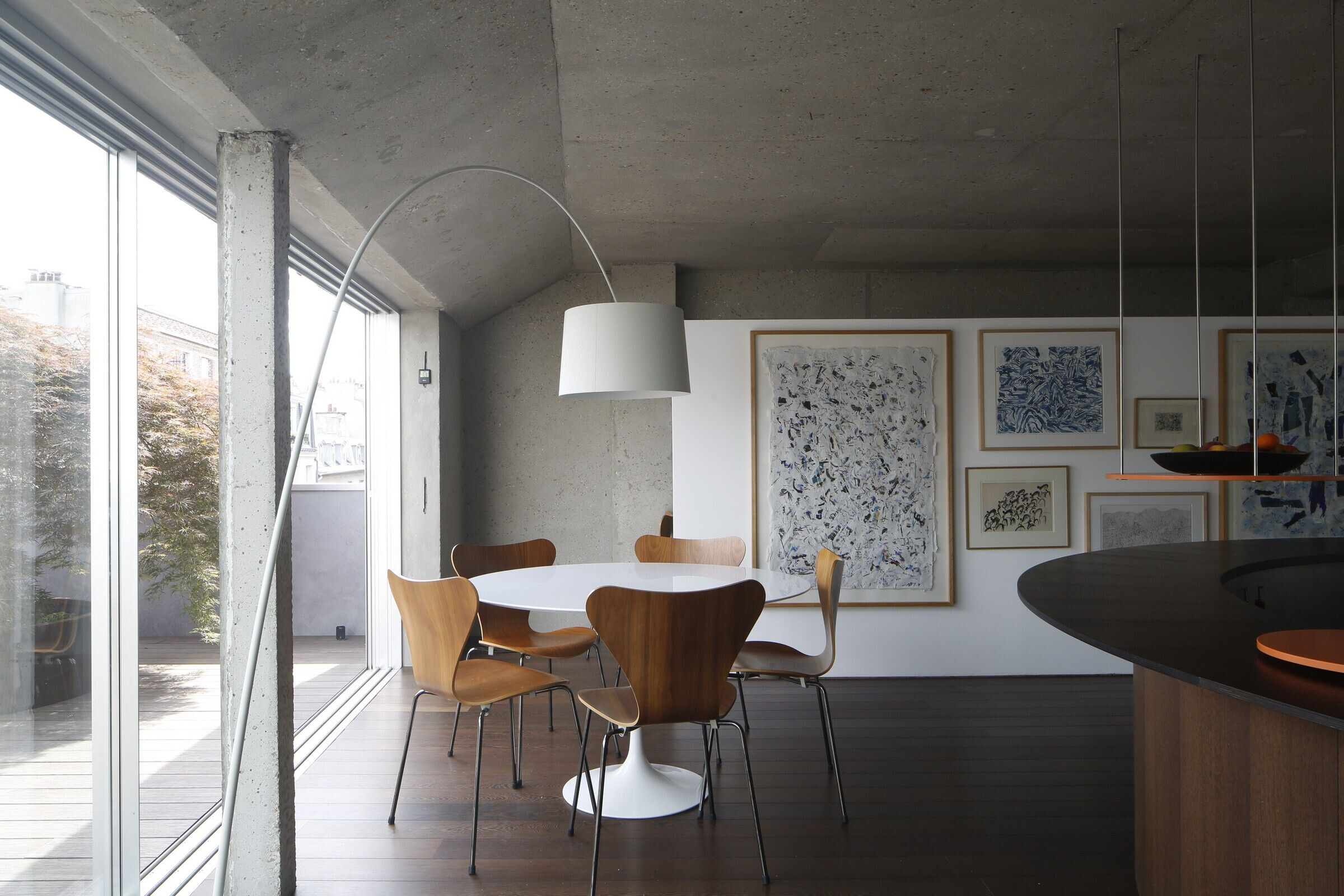

Flats like offices
Like the façade on the street, which has a pitch of 1m36, and the façade on the garden, which is 10 meters long and has no intermediate load-bearing structure, the rationality of the pillar and beam system enabled the transition from a single-purpose to a mixed-use building superimposing housing with offices. Our decision to expose the structure provided the incentive to not differentiate the dwelling spaces from the offices and to design the flats like offices.
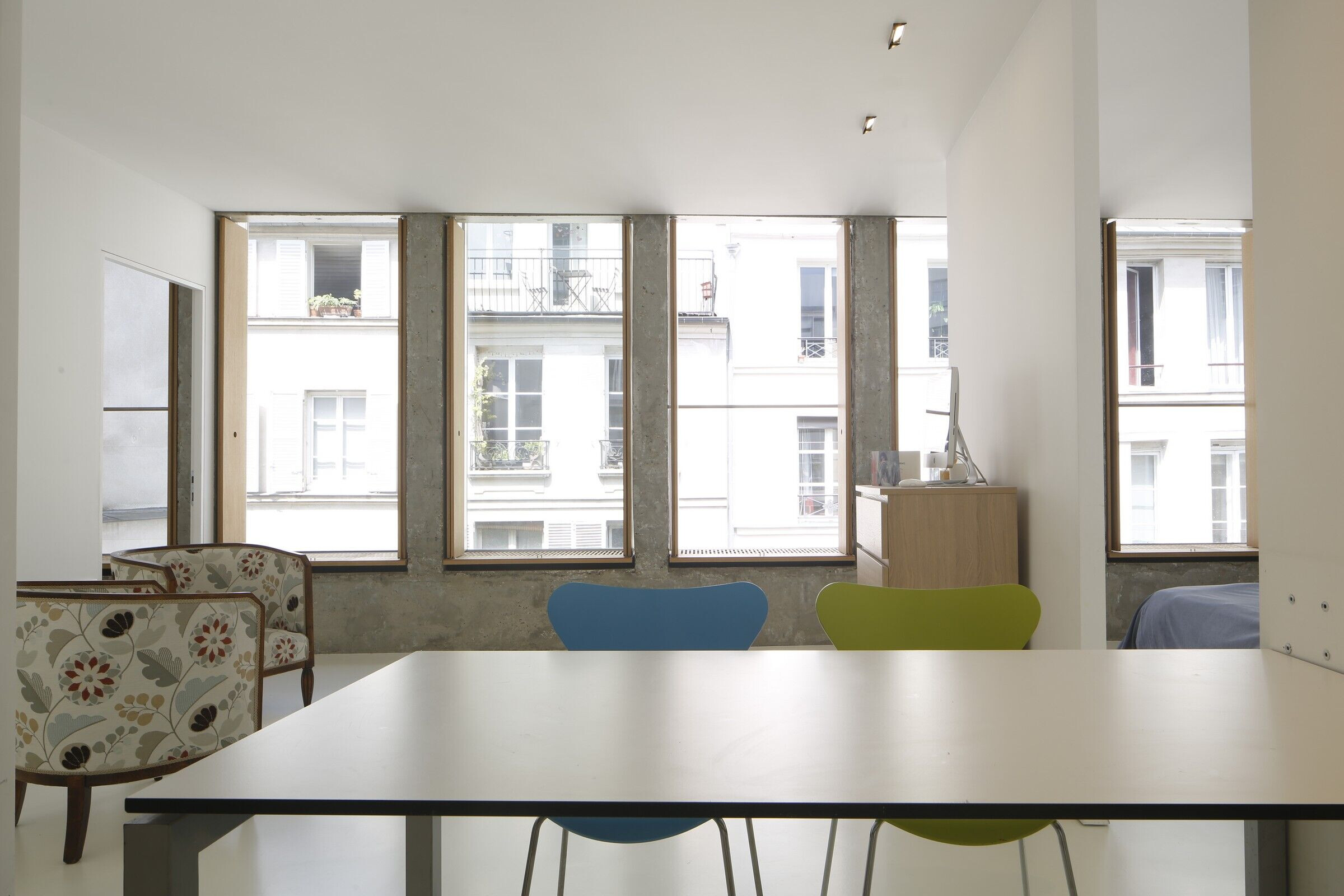

Modernist principles and brutalist aesthetic
In addition to demonstrating the multi-purpose aspect of an ordinary structure, our aim was to assert the relevance of the building’s modernist principles (open plans, grid and façade open to the north, ribbon windows to the south) and to highlight its brutalist aesthetic by enhancing its materiality.
The previous windows inserted in the grid and the stapled stone cladding hiding the structure of the façade have given way to a superposition of uninterrupted vitrines exposing the raw structure.
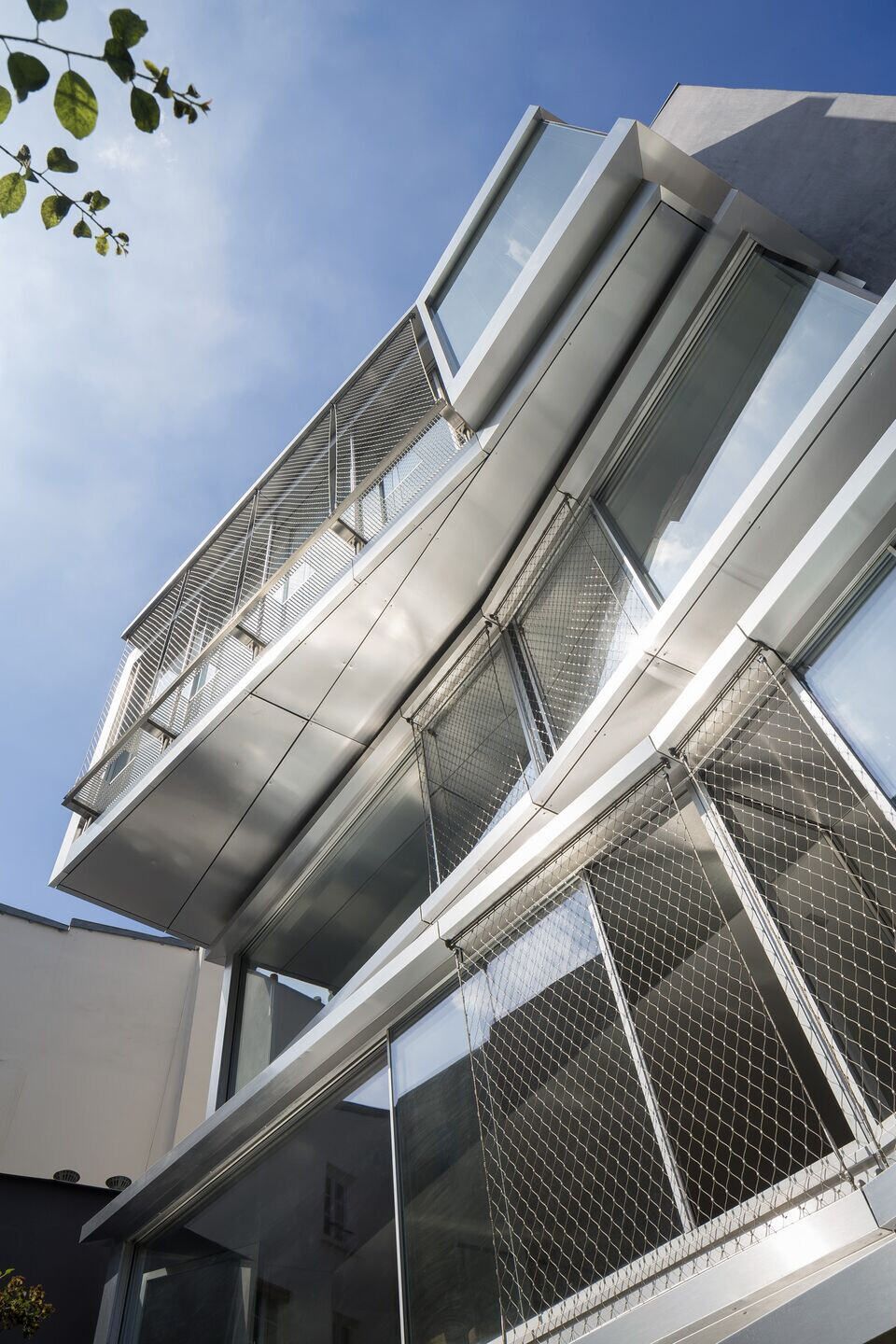

The new façade is suspended from vertical steel plates centered on the concrete columns and hooked onto the edges of the conserved floors. It is removed from the structural grid and it integrates into the interval radiators underneath the interior window sills as well as a double screen made of textiles (curtains in coated canvas) and carpentry (wooden shutters) allowing for a wide range in the degree of light and privacy.
On the courtyard side, the smooth and thin curtain wall so characteristic of the International Style has been replaced by a complex interplay of volumes hanging from the spandrel beams generating intermediate spaces, sort of benches with large windows overlooking the garden and offering various angles of view. The idea is to pass from a diaphanous design of the façade to an inhabited thickness in which one can remain between the interior and exterior, whether standing, seated, or reclining.
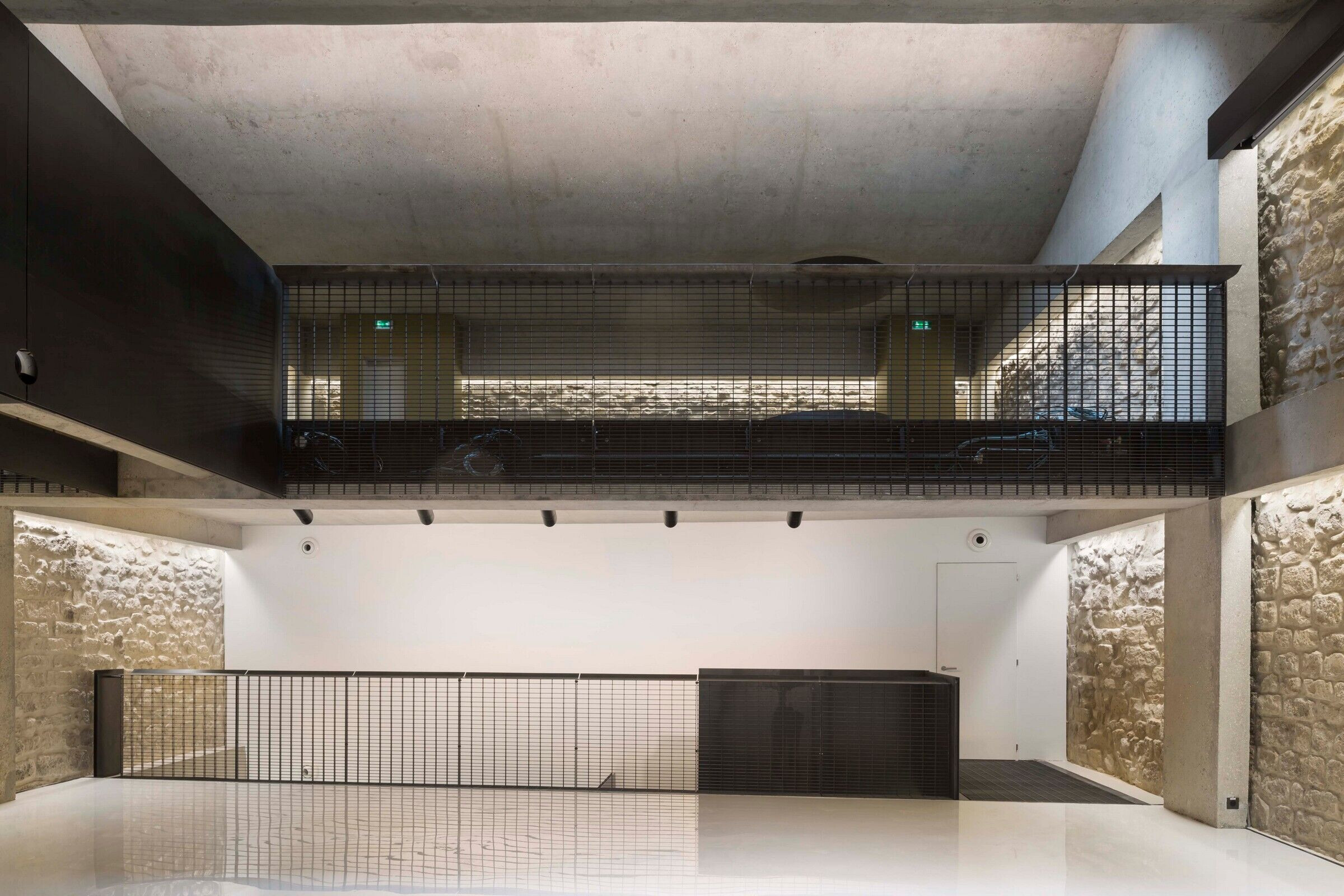

Team:
Architect: Moussafir Architectes (Jacques Moussafir with Virginie Prié, Estelle Grange-Dubellé, Pierrick Fromentin, Mélanie Hébrard and José-Maria Goncalves)
Structure engineer: Malishev-Wilson (Philip Wilson avec GhyslainProtois)
Fluids engineer: Louis Choulet (with Thibault Charles)
Project managers: exterior curtains
Inside/Outside (Petra Blaissewith Peter Niessen)
Construction companies: Lisandre (Structure), Rok (Electricity), Kozac (Locksmiths), Tischlerei Bereuter (Carpentry), Oleolift (Lifts), Lenco (Exterior curtain).
Photo Credits: © Hervé Abbadie
